Citrus trees (Citrus in Latin) have several advantages: evergreen foliage bringing an exotic touch all year round, well-scented flowering and, above all, tasty tangy vitamin-rich fruits.
These bushes however prove rather cold-sensitive : they can generally only be grown outdoors in open ground in mildest parts of Mediterranean belt. But good news is they grow very well in pots ! This makes it easy to overwinter them in a protected place, then move them back outside in spring to brighten garden, terraces or balconies.
Growing them does not present any particular difficulty, but will require some precautions to ensure good fruiting and keep a citrus tree in good health. Here are the steps to follow to plant or repot your citrus trees correctly.
Which citrus tree varieties to choose?
Many varieties of citrus trees exist. Most can be grown without problem in a pot. Preferentially choose smaller varieties, not exceeding 2.5 metres in height at maturity.
Choose for example :
- the lemon tree Citrus x meyeri 'Meyer' (2.5 metres height for 1.5 metres spread) ;
- the kumquat Fortunella margarita ‘Nagami’ (2.5 metres height for 1.5 metres spread) ;
- the mandarin Citrus reticulata ‘Keraji’ (1.5 metres in all directions) ;
- the orange tree Citrus sinensis ‘Washington Navel’ (2.5 metres height for 2 metres spread) ;
- the mandarin Citrus unshiu ‘Satsuma’ (2.5 metres height for 1.5 metres spread) ;
- the Chinese mandarin Citrus myrtifolia (2 metres height for 1.5 metres spread).
If you do not have an unheated room to overwinter your citrus tree (greenhouse, conservatory…), choose the calamondin. It is one of the few citrus varieties able to tolerate warm, dry indoor air.
-> Also discover our selection of 7 citrus trees to grow in pots
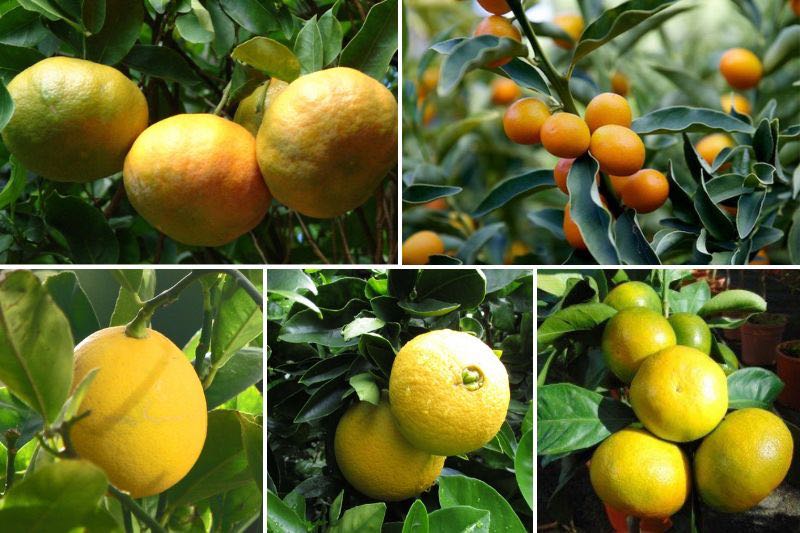
When to plant or repot citrus trees?
Ideal time to plant your citrus tree in a pot is spring, once last frosts have passed. Plant between March and May, depending on region.
Repotting takes place at same time, every 2 to 3 years approximately. It will also depend on natural growth of your citrus tree. In years when you do not repot, we advise performing a top-dressing. This simply means removing gently first superficial layer of substrate (about 3 to 5 cm) and replacing it with fresh potting compost.
Planting citrus trees in a pot
Container
For your citrus tree in a pot, choose a container that is perforated, so rainwater or irrigation water can drain without stagnating.
Terracotta pots provide better aeration of substrate, but will require more careful attention to watering (water evaporates faster than in a plastic pot). Wooden planters are also ideal for growing citrus trees in pots. Avoid pots with water reservoirs, which create stagnant moisture harmful to citrus trees.
For size, choose a container with a volume about 3 times larger than rootball (root system) for initial planting. For repotting, simply choose a container slightly larger than previous one.
To make moving heavy specimens easier before winter, you can choose a container on castors.
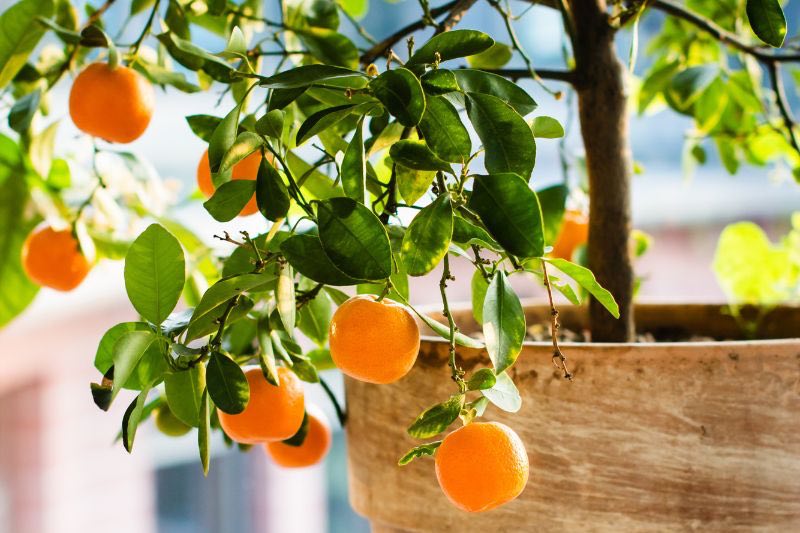
Substrate
Citrus trees appreciate soils rich in organic matter, but well drained to avoid waterlogging.
You can choose a potting compost for Mediterranean plants or a special citrus potting compost, which promote plant growth, support flowering and fruiting.
For planting or repotting your citrus tree in a pot, you can also make your own mix with roughly:
- 2/3 good-quality horticultural compost or non-calcareous garden soil ;
- 1/3 coarse sand or gravel to promote drainage ;
- 1 to 2 handfuls of household compost or well-rotted manure.
Planting
Before planting, place your citrus tree in a bucket or basin with a little water so rootball can rehydrate. This will also make removing plant from its pot easier.
- Lay a drainage layer of about 5 cm at bottom of container : clay balls, gravel, broken terracotta or lava gravel.
- Fill with substrate mix up to two-thirds of container.
- Remove citrus tree from its pot, gently tease root system if needed. Place it centred in container, then add substrate without burying collar (junction between root system and stem).
- Firm substrate with fingers around collar.
- Water generously.
- Add a mulch at base of plant (dead leaves, straw, wood chips, nutshells…).
- Place a saucer under container.
Exposure
Sun-loving plants, citrus trees appreciate warmth and light. Position them in sunny, sheltered location away from prevailing drying winds. Potted citrus trees are best placed outdoors from spring to autumn, in garden, on terrace or balcony.
As mentioned earlier, only calamondin can be grown indoors. In that case, to ensure fruiting, open windows regularly during flowering to attract pollinating insects.
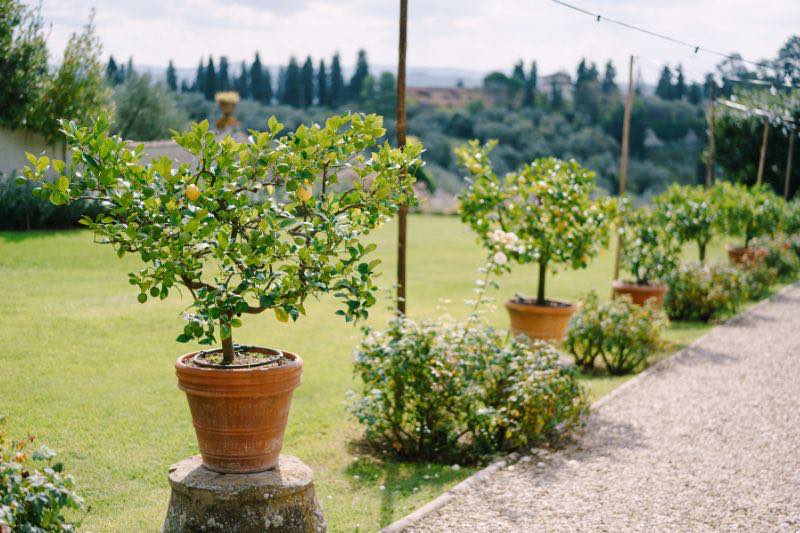
Care for potted citrus trees
Citrus trees are not difficult to grow, but require some care. Regular watering and feeding will enable them to develop well and fruit.
Watering
Managing watering is one of key points for successful culture of a citrus tree in a pot because :
- it dislikes drought (its root system is superficial, remaining near surface) ;
- in a container, substrate dries out much faster than in open ground and plant cannot seek water deep in soil.
Water therefore regularly your bush from spring to autumn (one to several times per week depending on weather). Water as soon as substrate is dry at surface. Prefer rainwater, which is less chlorinated and less hard than tap water (or leave tap water to stand for a few days before using).
Empty saucer about twenty minutes after watering or after heavy rain. Because while citrus trees need water, they hate stagnant moisture !
Reduce watering in winter.
Yellowing leaves or drooping foliage can be a sign of lack of water. Conversely, leaves pointing upwards can indicate excess water. If you notice either, feel substrate surface to check whether it is dry or moist.
Avoid watering foliage: ideally water at base of plant or install a drip system in pot. Mist foliage only when grown indoors (outside hours when sun heats leaves).
A layer of mulch installed at planting will help retain substrate moisture longer and thus space out waterings.
Feeding
As with watering, feeding must be regular and sustained. Citrus trees are greedy plants. In pots, substrate also loses nutrients much faster.
Fertilising will prevent deficiencies, optimise flowering, fruiting and fruit growth. Apply from spring to autumn, then stop over winter.
Choose a specific product, such as a fruit-tree fertiliser or a fertiliser for Mediterranean plants. You can opt for a liquid, fast-acting fertiliser, applied regularly, or a slow-release solid fertiliser. Prefer fertilisers rich in potassium rather than nitrogen (which promotes foliage more). Respect manufacturers' dosage instructions.
If you prefer, you can also add organic fertiliser (well-rotted manure, household compost, ground horn, dried blood, etc.) or ashes from fireplace.
Pruning
Pruning is carried out at end of winter, after fruiting and before new growth starts. It restores a balanced silhouette to the bush while aerating above-ground parts.
Using a clean, sharp pruning shear, remove dead, damaged or crossing branches to allow light and air to circulate better.
For more information on this subject, see our dedicated article : « Citrus trees: when and how to prune? ».
Pests and diseases
Citrus trees can be affected by various culture problems.
They can suffer from certain fungal diseases, such as Mal Secco, which causes branch drying and subsequent decline of plant. Cut off affected parts and do not put them on compost heap.
In case of heavy attacks by aphids, scale insects or whiteflies, spray a natural insecticidal solution based on black soap (1 tablespoon diluted in 1 litre of warm water) in late afternoon on affected parts.
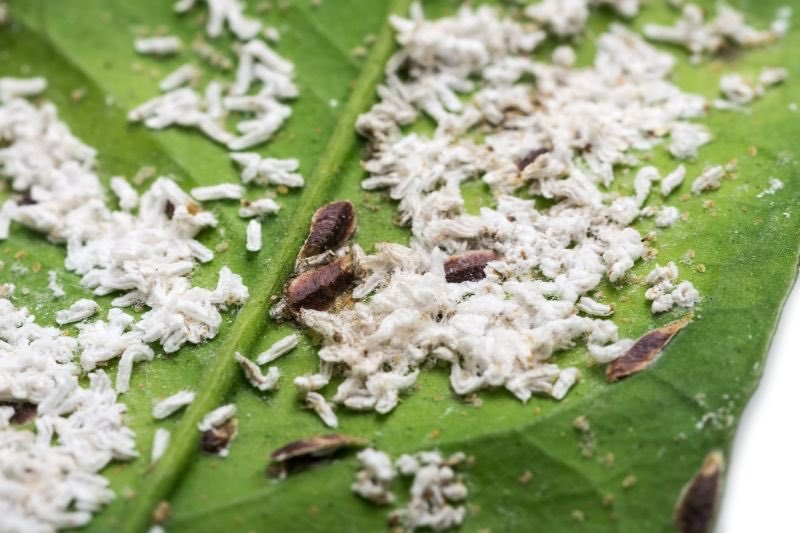
As prevention :
- in confined atmosphere (greenhouse, conservatory…) to limit appearance of pests such as red spider mite, ventilate regularly and increase ambient humidity with misting ;
- always use well-disinfected cutting tools when pruning, to avoid disease transmission ;
- you can also apply a wound-healing sealant on pruning cuts, to limit fungal development ;
- avoid damaging superficial roots when working at base of citrus tree (for top-dressing for example).
Overwintering
Most citrus trees are not very hardy (or their fruits are frost-sensitive), so they must be brought indoors during cold season.
Place them in a bright, but unheated room : citrus trees need a minimum temperature difference between growing season and resting season. They therefore appreciate relative cool at this time, around 5 to 10°C.
When last frost risks are gone, you can gradually move your potted citrus tree back outside.
If you want to learn more, discover our article : Overwintering orange, lemon and other citrus trees.
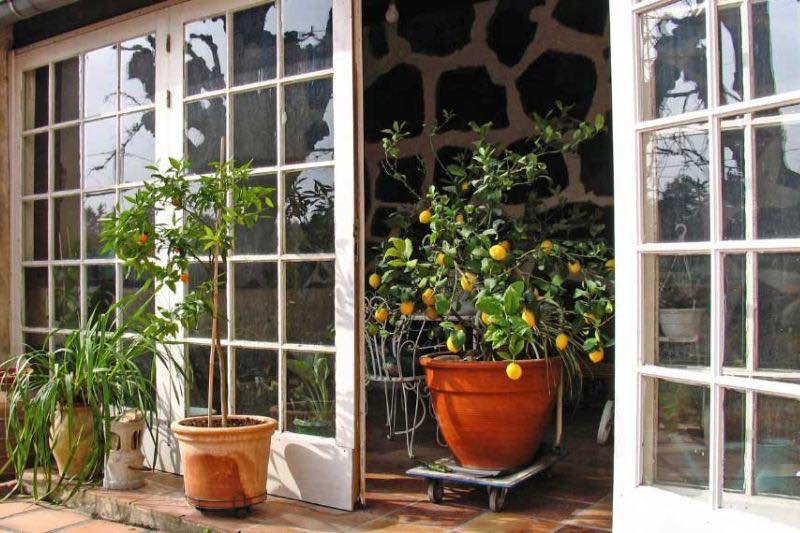































![Planting or repotting a citrus plant in a pot [plant_guide title="Repotting Citrus Plants"]
When it comes to [common_name plant="citrus"] plants, repotting is an essential step to ensure their well-being. Here are a few tips to guide you through the process:
1. **Timing**: The best time to repot your [common_name plant="citrus"] is in spring, just before the growing season begins.
2. **Choosing the Right Pot**: Select a pot that is slightly larger than the current one, with good drainage holes to prevent waterlogging.
3. **Soil Mix**: Use a well-draining potting mix suitable for [common_name plant="citrus"] plants, or create your own mix with equal parts of potting soil, sand, and perlite.
4. **Repotting Process**:
- Gently remove the plant from its current pot, being careful not to damage the roots.
- Loosen the roots and remove any dead or rotting ones.
- Place the plant in the new pot and fill in the gaps with fresh soil mix.
- Water the plant thoroughly and place it in a sunny spot.
5. **Aftercare**: Keep the plant well-watered but avoid waterlogging. Fertilize with a balanced fertilizer during the growing season.
By following these steps, you can ensure that your [common_name plant="citrus"] plant thrives in its new pot and continues to bear delicious fruits for years to come. Happy gardening!
[/plant_guide]](https://en.promessedefleurs.eu/blogwp/wp-content/uploads/2023/01/Comment-planter-ou-rempoter-un-agrume-en-pot-.png)
Comments